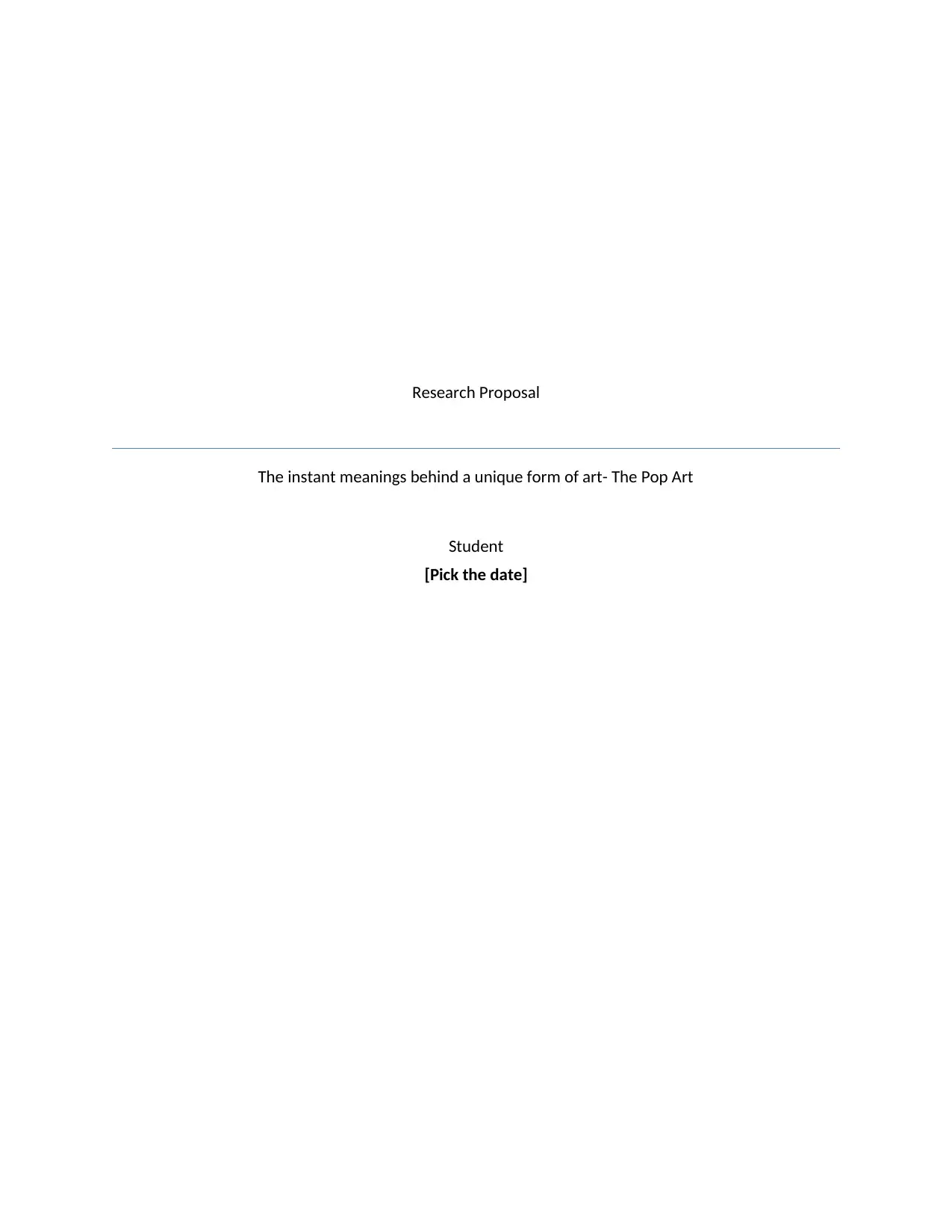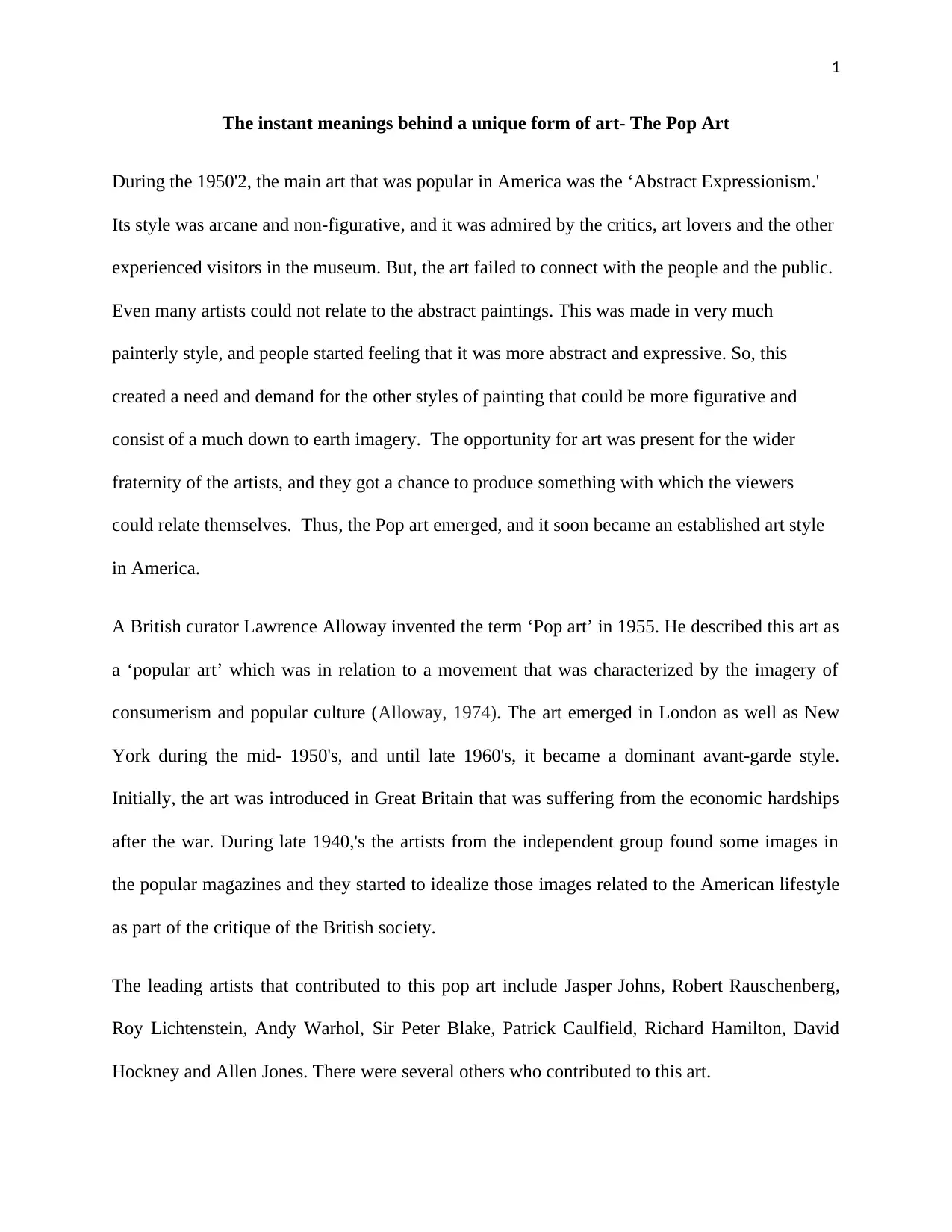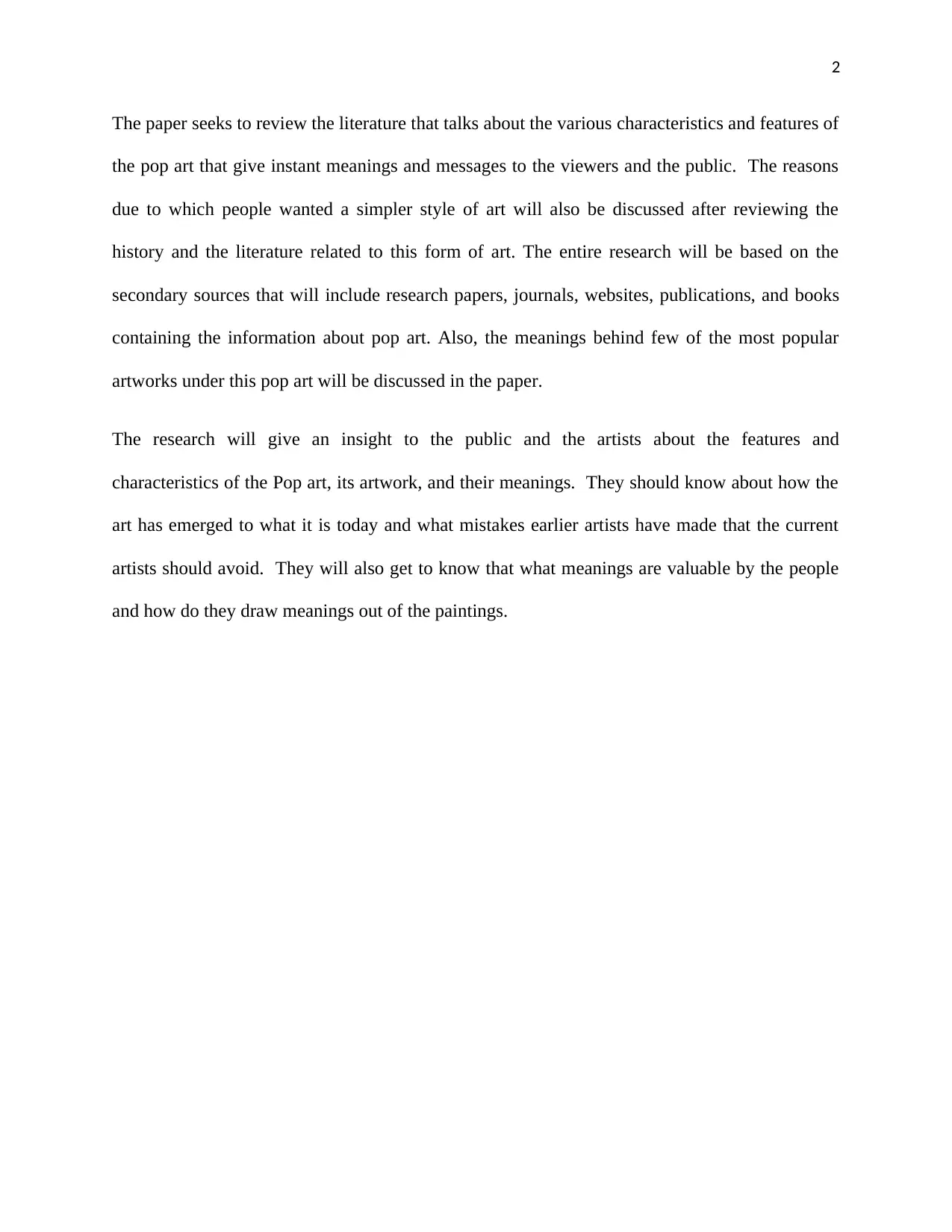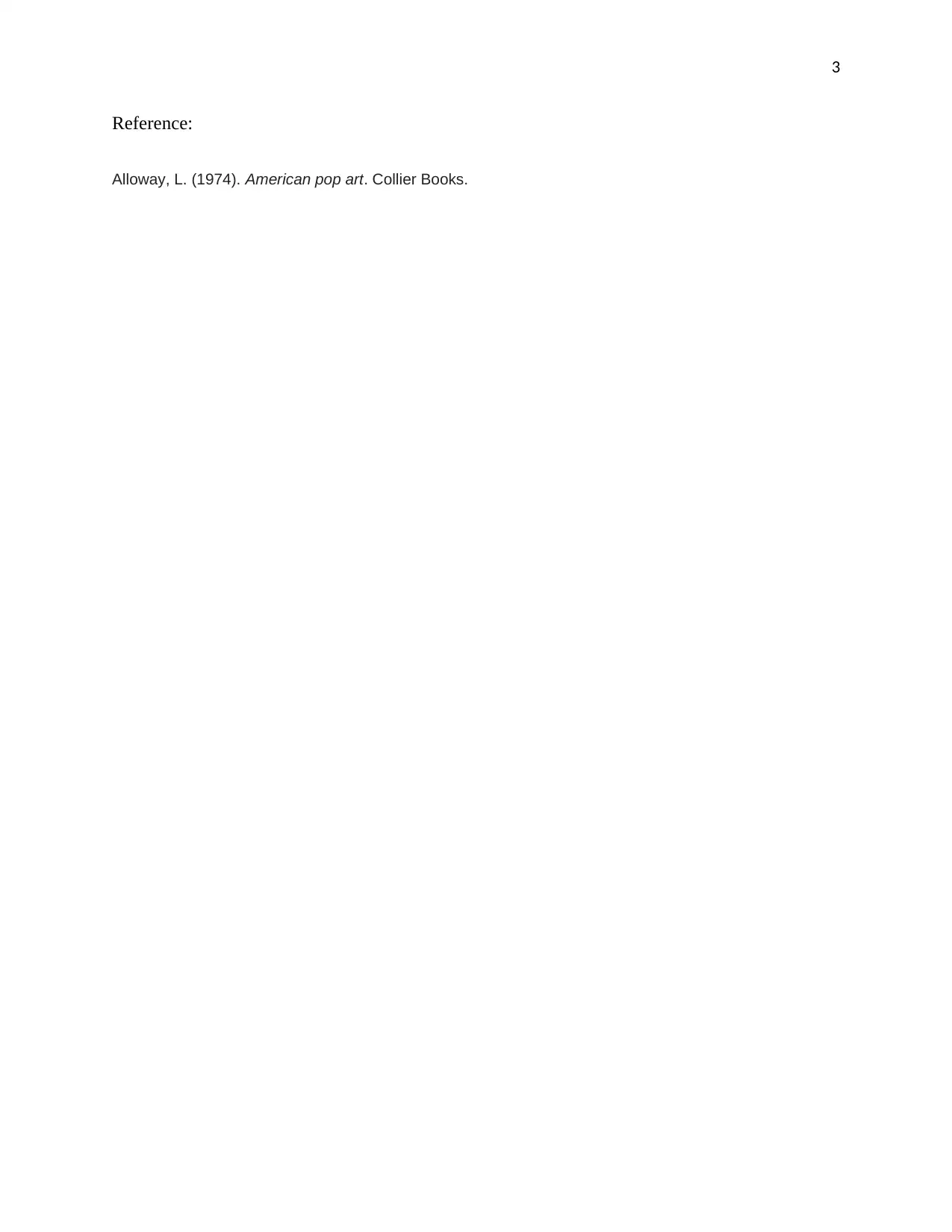Pop Art: Characteristics, Meanings, and History Report
VerifiedAdded on 2019/09/30
|4
|602
|294
Report
AI Summary
This report provides a comprehensive overview of Pop Art, beginning with its origins in the mid-1950s as a response to Abstract Expressionism. It details the shift towards more accessible and figurative art forms that resonated with the public. The report explores the influence of consumerism and popular culture on the movement, highlighting key figures like Jasper Johns, Robert Rauschenberg, and Andy Warhol. It discusses the emergence of Pop Art in both Britain and America, examining the differing contexts and influences. The report aims to review existing literature on the characteristics of Pop Art, its artworks, and the meanings they convey, with a focus on how the art form provides instant meanings to viewers. The research methodology involves the use of secondary sources such as research papers, journals, websites, publications, and books. The report will also analyze the meanings behind some of the most popular artworks under this pop art, providing insights into the features and characteristics of Pop Art, its artwork, and their meanings, as well as how the art has evolved and what lessons can be learned from the past.
1 out of 4






![[object Object]](/_next/static/media/star-bottom.7253800d.svg)